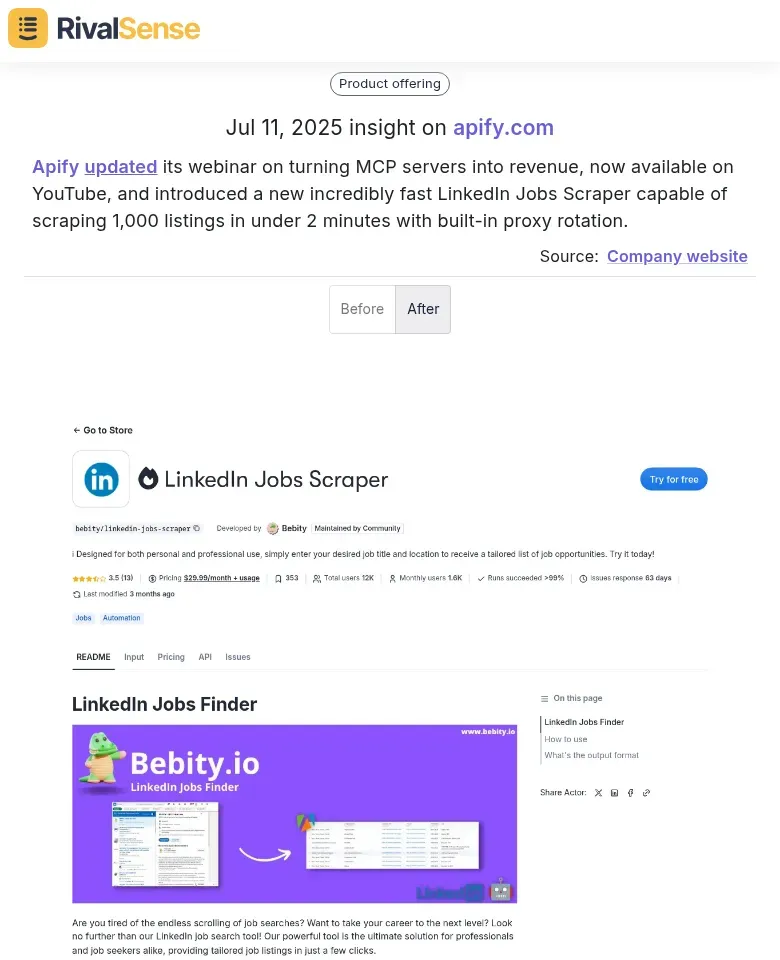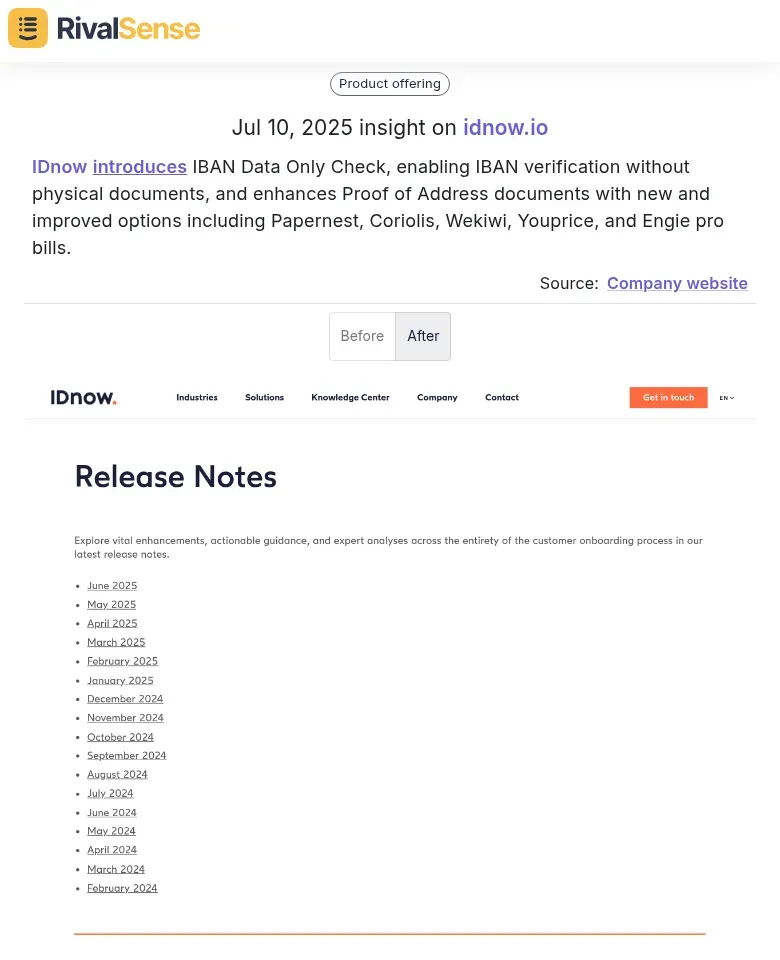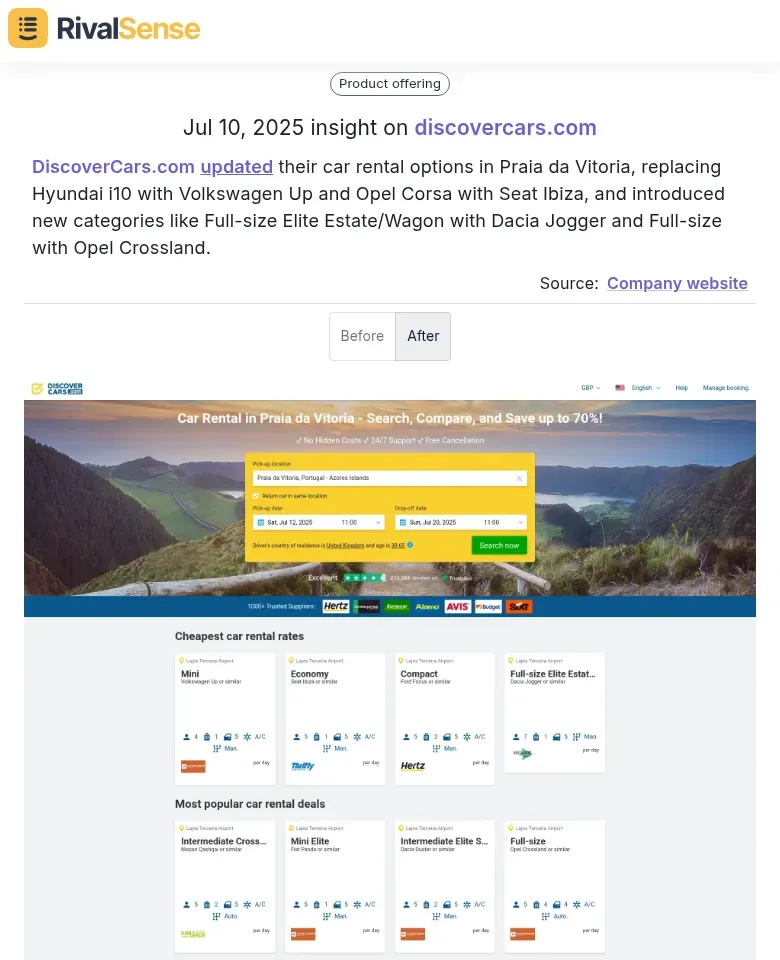Competitor Customer Acquisition Analysis: A Practical Guide for Business Leaders
Before diving into analysis, pinpoint who your main competitors are. Look beyond direct competitors to include businesses targeting the same audience or solving similar problems. This broader view reveals unexpected threats and opportunities.
Tip: Use tools like RivalSense to track competitor activities across 80+ sources, including product launches and media mentions, delivered in weekly email reports.
Step 2: Analyze Their Marketing Channels
Examine the channels your competitors use to reach customers. Are they leveraging SEO, paid ads, social media, or partnerships? Understanding their channel mix helps you prioritize your own acquisition efforts.
Checklist: ✅
- Review their website for SEO strategies (keywords, backlinks)
- Monitor their social media presence and engagement
- Track ad campaigns using tools like Facebook Ad Library
Step 3: Study Their Content Strategy
Content is a powerful customer acquisition tool. Analyze the type of content your competitors produce (blogs, videos, webinars) and how it resonates with their audience. Notice gaps where you can provide unique value.
Hint: Track webinar updates like how RivalSense spotted Apify's refreshed webinar on monetizing MCP servers. Such insights reveal how competitors educate prospects at scale:

Why it matters: Content upgrades signal shifting audience education tactics you can emulate or counter.
Step 4: Evaluate Their Pricing and Offers
Pricing strategies directly impact conversion rates. Compare competitors’ pricing models, discounts, and promotions to identify market expectations and differentiators.
Tip: Tools like RivalSense alert you to pricing changes, such as IDnow's new IBAN verification feature. Monitoring these helps adjust your value proposition:

Why it matters: Product enhancements often target acquisition friction points like onboarding complexity.
Step 5: Assess Their Customer Experience
Customer experience influences retention and referrals. Sign up for competitors’ newsletters, test their onboarding, and evaluate support responsiveness.
Checklist: ✅
- Measure inquiry response times
- Assess support quality
- Note free trial/demo structures
Step 6: Leverage Competitive Intelligence Tools
Manual analysis drains resources. Automate tracking with tools like RivalSense, which monitors product updates, partnerships, and regulatory changes across multiple sources.
Pro Tip: Watch for service expansions like DiscoverCars.com's vehicle category updates. Such moves often precede targeted acquisition campaigns:

Why it matters: Service diversification indicates new customer segments being pursued.
Step 7: Implement and Iterate
Apply your insights to refine acquisition funnels. A/B test strategies, measure conversion lift, and adapt quarterly. Continuous iteration beats one-time analysis.
Final Thought: Competitor tracking should be ongoing, not episodic. 👉 Try RivalSense free today to automate monitoring and get your first competitor report! Start Now
📚 Read more
👉 B2B Dropshipping: Crisis Response Tactics from Top Competitors
👉 How SEON's Automation Push Spurred Rival Innovation
👉 Quick Instagram Hacks for Market Intelligence & Competitive Positioning
👉 Unlock HR Tech Sales Wins: Competitor Tactics Research Templates
👉 Optimizing B2B Competitor Analysis for Financials & M&A Success
